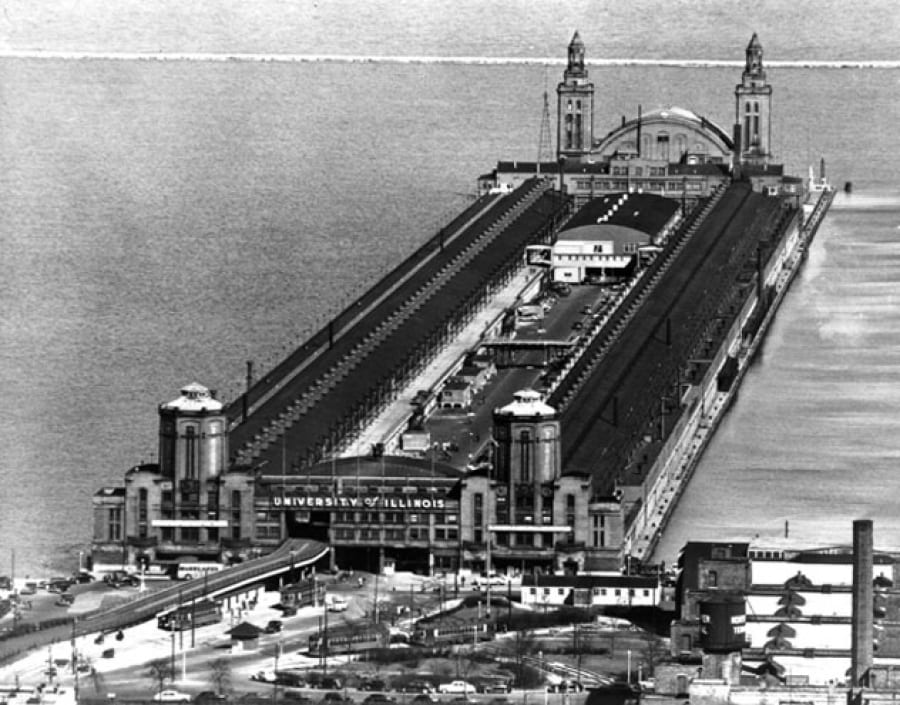
You’re not going to believe this, but Navy Pier has ties to the U.S. military. It’s true. Read on to learn more about why Navy Pier was built.
Why Was Navy Pier Built?
Navy Pier Chicago served as a temporary home for military personnel during the two world wars. It housed some soldiers, Red Cross and Home Defense back in World War I, and it served as barracks for recruit as well. Known as Municipal Pier at the time, it was renamed Navy Pier in 1927 to honor the Navy veterans of the first world war.
When the second world war emerged in the 1940s, Navy Pier went back to being a military station. It mainly served as a place to have pilot training orientation. According to Navy Pier’s website, over 200 WWII planes still rest at the bottom of Lake Michigan as a result of accidents during training.
Soon enough, the Navy opened other training programs as the war raged on, including training for soldiers to become aviation machinist’s mates, metal smiths or diesel engine technicians. The Navy moved out in 1946.
Interestingly enough, the pier wasn’t designed to be a military center. It was created for shipping and recreational purposes.
Navy Pier Chicago – Make No Little Plans
In 1909, Daniel Burnham, the most famous Chicago city planner, wanted Chicago to have several piers for shipping and entertainment. Only one was built however, and that one was placed at the mouth of the Chicago River. Construction began in 1914 of the formerly named Municipal Pier, and after $4.5 million in building costs, the pier opened to the public in 1916.
While the shipping part of the pier was doing okay, the entertainment aspect was thriving. In the late 1910s, a streetcar line, a theater and restaurants was built on the pier, and Municipal Pier experienced its best years in 1921 and 1922, when Chicago Mayor William H. Thompson’s “Pageants of Progress” draw nearly a million visitors during 15 days of events.
The good times would not last, however. During the Great Depression freight and passenger traffic declined, but cultural and recreational use of the pier continued.
After WWII, from 1946 to 1965, what is now known as the University of Illinois at Chicago used the pier as an undergraduate campus. In the 1950s, Navy Pier was the primary convention center for Chicago, with 12-16 trade shows or exhibits held annually.
McCormick Place, which was built in 1960, destroyed by fire in 1967, and re-opened in 1971, becomes the city’s main convention center, and in the early 1970s Navy Pier falls into disuse.
Fortunately, Chicago declared Navy Pier a landmark in 1977, and in 1994 a $150 million Navy Pier redevelopment project is commenced. On July 12, 1995, the new Navy Pier re-opened, with year-round shops, restaurants, attractions and exhibition facilities.

Why can I not find information on the Naval Armory Navy Pier is not mentioned as a reserve center and most of all had hundreds of Naval league Sea Cadets held their monthly meets their. I was raised in Englewood district and was taken by bus from in front of… Read more »